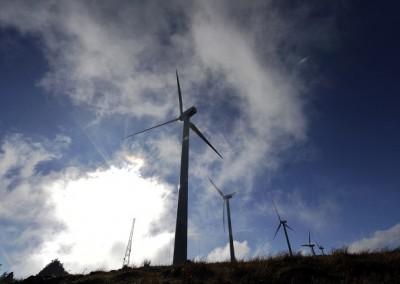
(Photo: Tony Karumba/AFP/Getty Images)
Green growth brings various images to mind, from wind turbines to smart cars to solar panels. While these manifestations of green growth connote innovation, advanced technology, and expensive start-up costs, developing countries with limited means can also participate in and reap the benefits of green growth.
In essence, green growth is about making economic growth stable, efficient, and effective in the long-term by taking into account environmental and social factors. It is also about sustainability, and finding the intersection between public goals and profitable investments.
Businesses around the world have begun making green investments. For example, in Ghana, West Africa’s largest per capita consumer of charcoal, Toyota employs over 200 people to manufacture and sell more efficient cook stoves to 35,000 households, offsetting 15,000 tons of carbon dioxide emissions. In Bangladesh, WasteConcern, a social enterprise that converts roadside organic waste into agricultural compost, estimates that between 2001 and 2006 it created 986 jobs annually and generated $1.10 million USD in compost sales whilst providing an alternative to expensive foreign fertilizers.
Although inspirational, these examples of success are few and far between. However, exploring the opportunities in green growth gets at the questions of how to promote innovation in development, address access to energy, and create jobs.
Given the significance of these challenges, development agencies such as the World Bank are engaging the private and public sectors to address green growth challenges. For example, in 2011 infoDev, a partnership program in the Financial and Private Sector Development Network of the World Bank Group, worked with the Kenyan government to capitalize on Kenya’s tremendous entrepreneurial spirit to open the first Climate Innovation Center (CIC). The CIC aims to support local capacity, particularly in the private sector, to develop climate and clean energy solutions and promote local green innovation. Similar CIC’s are planned or opening in India, Ethiopia, South Africa, Morocco, Vietnam, and the Caribbean.
Even when donors are at their side, however, private sector businesses still face numerous obstacles in bringing a green product to market. Among those in the industry, this phenomenon is known as the “valley of death.” Exhausting registration processes, lack of seed funding, poor manufacturing capacity, and unstable supplies of basic necessities such as electricity and clean water all jeopardize products on their way from inception to the marketplace.
In order for green growth to become a reality in developing countries, they must have institutions that support private sector development and innovation. Brookings Institution scholar Nathan Hultman argued at a recent event that these institutions include a healthy culture for entrepreneurship, accessible and low cost financing, and capacity building programs for people who do not have access to capital.
These are institutions that will build a better business environment for all private sector actors, not just those in green industries. Given the history of economic development, however, they require both time and political will to establish.

